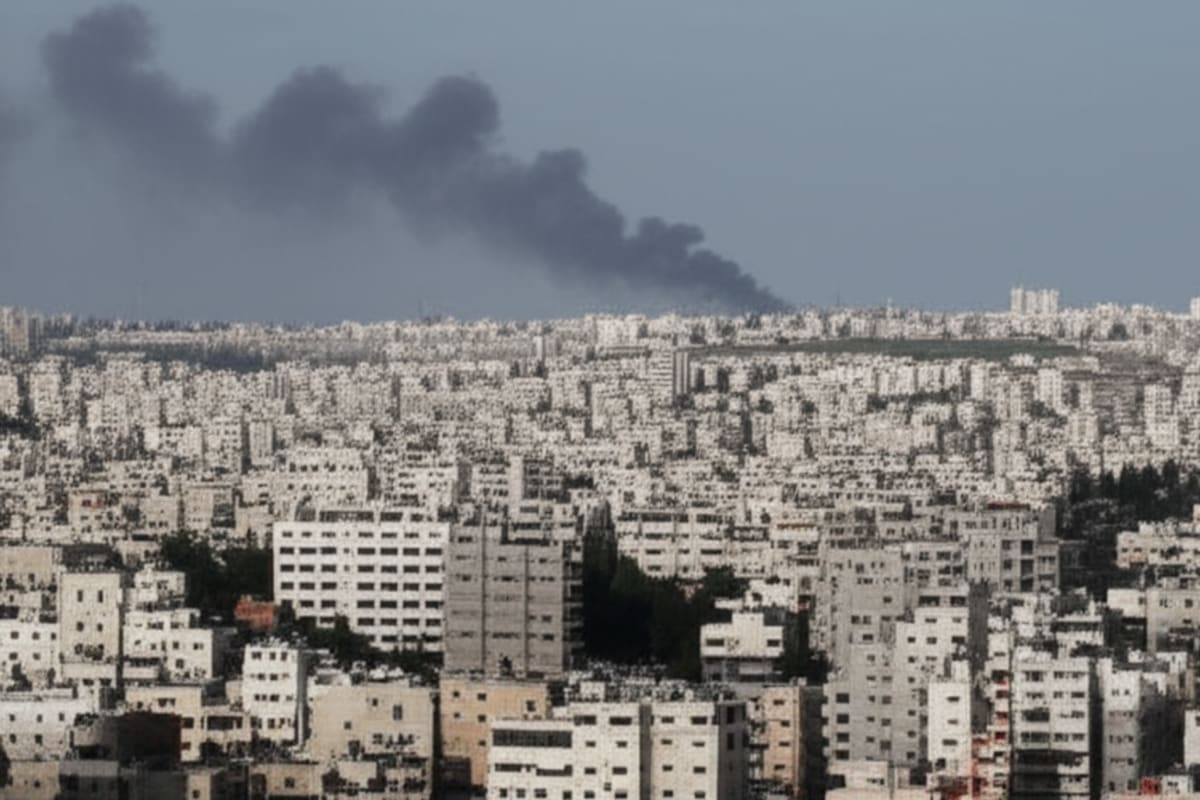Hamas Military Leader Rejects Gaza Ceasefire Plan Over Disarmament Clause

The prospects for a lasting ceasefire in Gaza have suffered a significant setback following reports that a high-ranking commander within Hamas's military wing has rejected a peace proposal brokered by the United States. Sources familiar with the matter, speaking to the BBC on October 2, 2025, indicate that the commander, whose identity remains undisclosed, voiced strong opposition to the terms presented by President Trump. This development underscores the deep divisions and seemingly irreconcilable differences between Israel and Hamas, casting serious doubt on the possibility of a swift resolution to the ongoing conflict. The American-backed proposal, which Israeli officials had reportedly accepted in principle, centered around two key demands: the complete disarmament of Hamas and its exclusion from any future governing role in the Gaza Strip.
For Israel, these conditions represent non-negotiable security imperatives.
Israeli officials maintain that preventing future attacks and ensuring the long-term safety and security of its citizens necessitate the dismantling of Hamas's military capabilities and its removal from positions of power
Background
Specifically, the disarmament clause is aimed directly at Hamas's military wing, the Izz ad-Din al-Qassam Brigades, which Israel, the United States, and the European Union designate as a terrorist organization
The demand to relinquish governance seeks to dismantle Hamas's political infrastructure and its established control over Gaza since seizing power in 2007, following a violent power struggle with Fatah
From Hamas's perspective, and particularly from the perspective of its military leadership, these conditions are viewed as existential threats to the movement's survival and its core mission
Disarmament, in Hamas's view, would strip the movement of its primary means of resisting what it considers Israeli occupation and aggression – a role that Hamas views as legitimate under international law and central to its identity
Relinquishing governance would mean surrendering the political power and administrative control it has painstakingly built and consolidated over nearly two decades, a move that would fundamentally alter the group's political identity and diminish its influence within Palestinian society
The objection from a military leader suggests that hardline elements within Hamas prioritize their military capabilities and political autonomy above the immediate cessation of hostilities, even considering the devastating impact on the Palestinian population in Gaza
This implies a willingness to continue the conflict, despite the immense human cost, rather than accept what they perceive as an unconditional surrender
The current conflict in Gaza, preceding this ceasefire proposal, has been characterized by a dire humanitarian crisis.
Years of blockade, imposed by Israel and Egypt, coupled with repeated intense military operations, have left the Gaza Strip in a state of near-total devastation
Widespread destruction of infrastructure, including hospitals, schools, and residential buildings, has been reported, alongside a severe shortage of essential supplies, including food, water, and medicine
An unprecedented displacement crisis has seen hundreds of thousands of Palestinians forced to flee their homes in search of safety
International calls for a ceasefire have grown increasingly urgent, fueled by the catastrophic humanitarian situation facing over two million Palestinians living in Gaza
Regional and Global Context: President Trump's active involvement in a Middle East peace initiative in 2025 signals a renewed American diplomatic push in the region, building on decades of previous efforts by successive administrations. The United States has historically played a central role as a mediator, though its close alliance with Israel often engenders skepticism and distrust from Palestinian factions. Other regional actors, such as Egypt and Qatar, have also played instrumental roles in past mediation efforts, often acting as crucial conduits between Israel and Hamas. Their influence will undoubtedly be crucial in any renewed attempts to bridge the current impasse and find a mutually acceptable path forward. Globally, the conflict continues to be a major source of international tension and division, with countries taking vastly different stances on the issues at hand.
The escalating humanitarian crisis in Gaza has prompted strong reactions from the United Nations, human rights organizations, and numerous nations worldwide, all urging an immediate end to hostilities and demanding unrestricted humanitarian access to alleviate the suffering of the civilian population
The failure of this proposed ceasefire further exacerbates these concerns, prolonging the suffering and significantly increasing the risk of regional escalation, potentially drawing in other actors and further destabilizing an already volatile region
Relevance for Southeast Asian Readers: The enduring conflict in Gaza resonates deeply across Southeast Asia, a region with a substantial Muslim population, particularly in Indonesia, Malaysia, and the Southern Philippines. For many in these countries, the Palestinian struggle is viewed through a lens of human rights, self-determination, and religious solidarity. Public sentiment often leans strongly in favor of the Palestinian cause.
Governments and civil society organizations in these nations frequently express strong support for the Palestinian cause, advocate for a two-state solution based on the pre-1967 borders, and condemn actions that lead to civilian casualties and displacement
Humanitarian aid organizations from Southeast Asian countries are often at the forefront of relief efforts for Gaza, mobilizing resources and public support to provide much-needed assistance
News of failed peace initiatives, like the current one, often sparks renewed calls for international pressure on all parties to uphold international law, respect human rights, and protect civilians from the ravages of war
The economic implications for Southeast Asia, while largely indirect, can potentially be felt through disruptions to global oil markets and supply chains should regional tensions escalate further, potentially affecting critical shipping routes like the Suez Canal
Furthermore, the conflict can, in some instances, fuel narratives of injustice that can be exploited by extremist groups to garner support, though this is not a widespread or direct impact on the region's security landscape
Nevertheless, governments remain vigilant against the potential for radicalization stemming from such deeply emotional international issues
The rejection of this ceasefire plan by a key figure within Hamas's military wing clearly signals that the path to peace remains fraught with significant obstacles and challenges. The immediate implication is a likely continuation of hostilities, or at best, a fragile and temporary cessation that does not address the underlying causes of the conflict. This will inevitably lead to further suffering for the civilian population in Gaza, whose lives are directly impacted by the ongoing violence and the debilitating effects of the blockade. For Israel, the rejection reinforces its narrative that Hamas is unwilling to genuinely pursue peace and remains committed to its stated objectives, potentially justifying further military action aimed at degrading the group's capabilities and undermining its control over Gaza.
Future efforts to achieve a lasting peace will likely require a multi-faceted and comprehensive approach, involving sustained diplomatic engagement, addressing the underlying causes of the conflict, and building trust between the parties
This could include renewed, intensive diplomatic efforts led by the United States, potentially with greater involvement from regional mediators such as Egypt, Qatar, and perhaps even Saudi Arabia, to find a compromise that both ensures Israel's security and addresses Hamas's political aspirations in a manner acceptable to the international community, or at least to a significant portion of it
Creative solutions might need to be explored regarding the future governance of Gaza that do not exclusively rely on Hamas's direct political control but also do not ignore its significant popular support within the Palestinian population
Disarmament, if it is to be achieved, would need to be coupled with robust international guarantees and a clear political horizon for the Palestinian people, which is currently lacking
This would involve tangible steps towards a two-state solution and an end to the occupation
Without addressing these fundamental issues, any ceasefire will likely remain a temporary pause, rather than a genuine step towards enduring peace and stability in this volatile region
The international community, including Southeast Asian nations, will likely continue to pressure all parties for a humanitarian ceasefire, increased aid access, and a renewed commitment to a negotiated two-state solution based on international law
However, as this latest development demonstrates, the immediate prospects for such a resolution remain dim, with profound consequences for all involved
```